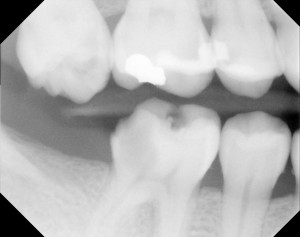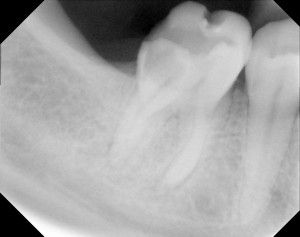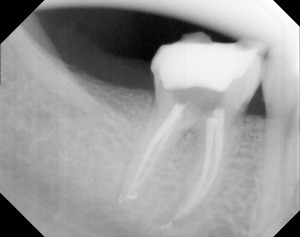I’m not sure who said this, but when it comes to toothaches and root canal therapy respectively, I think it is quite accurate.
A frequent scenario in my practice is the patient who is referred as an emergency for nonsurgical root canal therapy. Although this could occur secondary to a number of pulpal or periapical diagnoses, the patient suffering from a symptomatic irreversible pulpitis is the most common. This is usually accompanied by a symptomatic apical periodontitis, but not always. Typically, they have often not slept well for a period of time prior to the visit, are in a fair amount of discomfort even at rest, and are also often scared of the potential of greater discomfort during the necessary endodontic intervention. It is, for all intents and purposes, a perfect storm.
Many people are afraid of dental visits, and most of these people are afraid of dental pain. For patients suffering from a symptomatic irreversible pulpitis, this fear has some basis in truth. When considering the treatment of the mandibular first molar, anesthesia effectiveness is significantly decreased when patients are suffering from an irreversible pulpitis. We all owe a significant debt of gratitude to the researchers at THE Ohio State University, under the watchful eye of Dr. Al Reader. They have compiled a significant amount of research on anesthesia technique and outcomes that can greatly assist any dentist who wants to take care of patients suffering from an irreversible pulpitis.
You have a number of tools at your disposal when dealing with the inflamed vital tooth(particularly the lower first molar):
1. Iatrosedation: A relaxed state induced by actions rather than drugs
2. Use of analgesics: Premedication with antiinflammatory medication
3. Block anesthesia: Conventional, Gow-Gates or Akinosi
4. Infiltration anesthesia
5. PDL injections(Ligajet, PeriPress)
6. Intraosseous injections(XTip, Stabident)
7. Intrapulpal injections
The following patient was seen at the end of the day by her general dentist and received a referral. After suffering through two more sleepless nights hoping the tooth would settle down, she contacted my office to be scheduled for nonsurgical root canal therapy. She was seen the same day.
Tooth #30 had gross caries, and was causing radiating pain from the lower right quadrant. Because our office is computerized, the patient was able to register online and complete her medical history prior to her visit. She had an opportunity to discuss her treatment options and her personal concerns with both the Dr. and the assistant in the operatory before treatment. She had taken 800mg of Ibuprofen one hour prior to her scheduled visit upon our suggestion. The patient was anesthetized, rubber dam isolation was performed, and her case was completed the same day.
Radiographically, I was pleased with the outcome. All four canals were treated, and a 2-1-2 system on the distal was successfully debrided and obturated. I wanted to talk about this case though, because it was very illustrative of my thought process when seeing people in pain:
1. Listen to their concerns. Directly address the concerns and be clear with the patients about what they are going to experience during the procedure. Be both kind and patient, as fear can manifest as anger and frustration as well.
2. If possible, use premedication. It is not always possible, as many times, if the diagnosis is unclear, use of pain medication can attenuate the patient response to various stimuli. The most commonly used premedication in my practice is Ibuprofen. There are medical contraindications as well as pharmaceutical contraindications for it’s use, so a thorough medical history is always advisable.
3. Profound anesthesia is a must. Use of cold test or ept prior to beginning treatment is strongly recommended. Although the cold test alone is not a completely reliable test of adequate anesthesia, I often will use it in conjunction with EPT prior to starting treatment.
The September 2010 Journal of Endodontics featured a study that showed that patients suffering from irreversible pulpitis who received pretreatment with Antiinflammatory medications(Ibuprofen and Indomethacin) had a higher rate of successful anesthesia. This finding was statistically significant when compared to placebo. While it is important to note that there have been earlier studies that refute this, my clinical experience is in line with the authors of this most recent paper.



One Comment